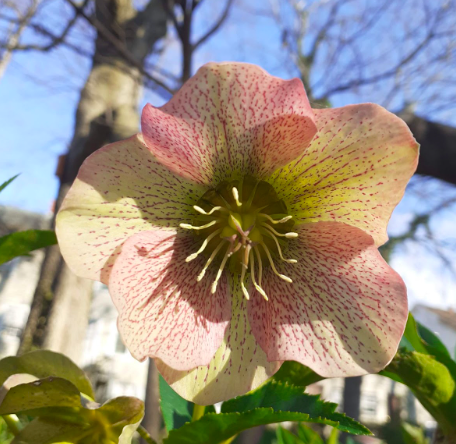 Hello Hellebore! What kind of plant is crazy enough to bloom in February? That would be the helle-poisonous Hellebore! Commonly called Lenten Roses or Christmas Rose, hellebores are a perfect spot of beauty during a dark and cold time of the year! Despite its common names, hellebores are not in the rose family but are instead cousin to the buttercup in the Ranunculaceae family. There are 20 species of hellebores, some being evergreen while others send up their leaves in the late fall/early winter and send up their bowed blooms in winter and early spring. A distinctive feature of hellebores is how the blooms face downward. One can only imagine they do this out of shame for hellebores are extremely poisonous! Eating any part of the hellebore plant is a big no-no as it will make you very sick, at best. The poison of hellebores was first used in the First Sacred War at the start of the sixth century BC to poison the water supply of the city of Kirrha! Just touching certain species of hellebore can cause extreme irritation for some people. It is recommended, when collecting seeds, to wait for the seed pods to dry completely and then just shake the seeds from the pod into a container. With such a beautiful yet dangerous reputation it is no wonder that hellebores have two meanings in the Victorian Language of Flowers. They can mean both scandal and hope! Janet Douberly is a helleboring employee at Downtown Greens. This article was published in the February 2023 edition of Front Porch Magazine. To view the full publication use the link below.
0 Comments
Leave a Reply. |
AuthorWrite something about yourself. No need to be fancy, just an overview. Archives
February 2024
Categories |
 RSS Feed
RSS Feed